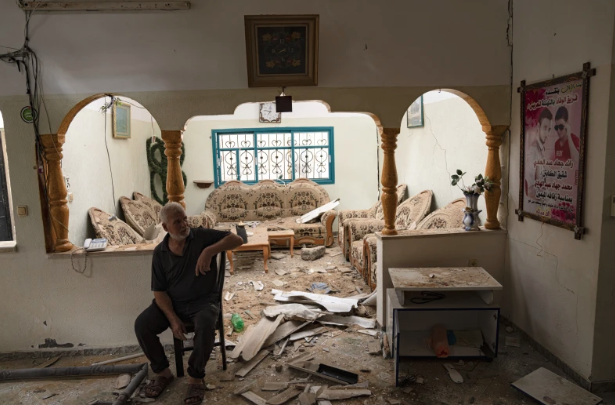Israel
Israel War: The Deep Wounds of Gaza’s Strife

Through the labyrinth of history’s long corridors, where the wails of those long suffering and the thunder of ordinance have often intertwined, Jerusalem now murmurs its latest chapter of anguish. The Israel war’s narrative has been sharpened under the leaden skies above Gaza, as Prime Minister Benjamin Netanyahu announces the advent of a “second stage” in the unyielding conflict against Hamas. It is characterized by the march of infantry and the ghostly crescendos of aerial and naval bombardments.
Standing under the celestial dome that has witnessed prophets and kings, Netanyahu frames this latest chapter as a crusade for Israel’s very right to be, casting it not just as a territorial dispute but as a fight for existential certitude. With the menacing rhythm of a potential ground incursion reverberating, this newest phase of battle raises poignant questions about the nature of warfare and survival in a land both holy and deeply divided.
In the complex tapestry of the Middle East, the threads of the past are tightly woven with those of the present. The conflict in Gaza is but the latest knot in a lineage of bloodshed that traces back centuries. It’s a cycle where each iteration reflects a grim constancy: the siege, the resistance, and the inevitable suffering of innocents.
The landscape is a testament to this heritage—a parched expanse where warriors of old once stood, now marred by the craters of modern warfare. The battle tactics have evolved, but the objective remains hauntingly similar: to claim victory over a land that seems destined to be soaked in sorrow.
From the heart of devastation, accounts of horror escape the lips of those who witness death’s indiscriminate dance. Gaza residents recount bombardments that eclipsed the horrors of former skirmishes, toppling communication towers and severing the territory’s 2.3 million souls from the embrace of the world.
Within this chaos, tales of despair and bravery emerge. Civilians, armed with nothing but their bare hands, defy the steel and fire to rescue their neighbors from beneath the wreckage of shattered homes. Theirs are the stories that bleed through the statistics, humanizing the tragedy, lending flesh and blood to numbers too large to fathom.
The strategic maneuvers and military gambits of this conflict reach far beyond the sandy borders of Gaza. Each explosion reverberates through the halls of power around the world. The global chessboard quivers as pieces shift, alliances strain, and the specter of a broader conflagration looms ever closer.
In this great game, the people of Gaza and Israel are but pawns—subject to the whims of those who claim to know the path to peace yet walk the road to war. The iron fist of strategy squeezes hope from the hearts of families who dream not of victory, but simply of a morning without mourning.
As the soil of Gaza trembles under the weight of tanks, and the air quivers with the screech of jets, Netanyahu’s assurances of a decisive and victorious end come under scrutiny. Critics pierce through the veil of military jargon, questioning the true cost of a victory written in the ledger of human lives.
The promise to rescue hostages and obliterate the military capabilities of Hamas intertwines with the grim acknowledgment of a calamitous beginning to the conflict. A battle heralded by a rampage that claimed over 1,400 lives necessitates not just a military strategy but a moral reckoning.
The people of Gaza walk a landscape that has been violently reshaped. Homes once filled with laughter now lie in ruins. The ground shakes not from the footsteps of joyous children but from the relentless barrage of shelling.
Amidst this, the dead demand dignity, even as the living struggle to provide it. Overcrowded cemeteries compel the grieving to unearth the long buried to make room for the newly fallen. The cycle of death and burial, once a ritual of closure, has become a recurring curse.
As the sun sets on another day of conflict, the world watches with a weary eye. Will the next dawn bring a glimmer of peace, or will it merely herald another round of bloodshed? The children of Gaza and Israel inherit a legacy of loss—ancient lands turned into modern battlefields where the past’s shadows loom large over the future.
For now, the narrative of war trudges on, a relentless march that leaves behind a trail of questions that pierce the soul. What does victory mean when every triumph is pyrrhic? How can a land so hallowed be so habitually haunted by the specters of war? As the story unfolds, these questions hang heavy over the Holy Land, waiting for an answer that remains as elusive as peace itself.













You must be logged in to post a comment Login